Lake Lily: A Duck Haven
There’s still time to catch the spring duck migration at Cape May Point, and Lake Lily is a hotspot.
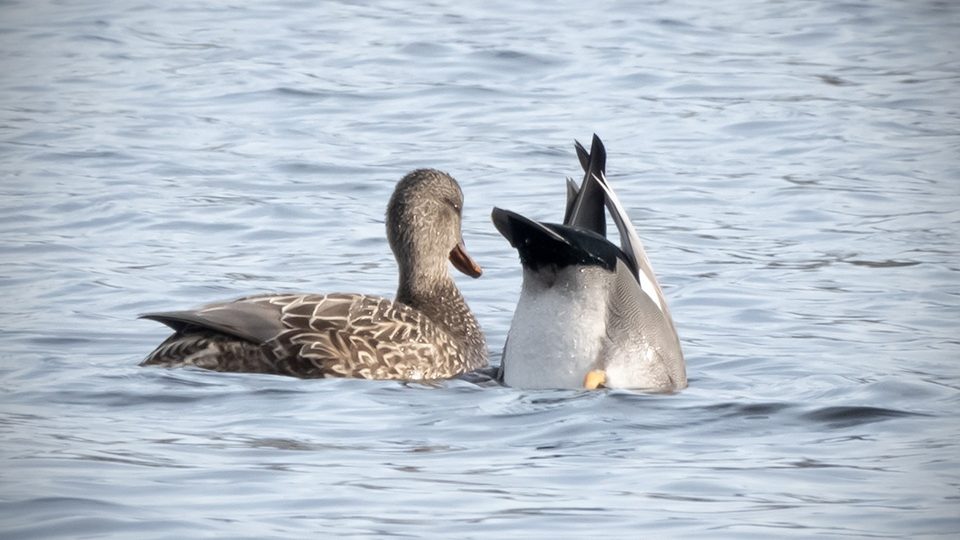
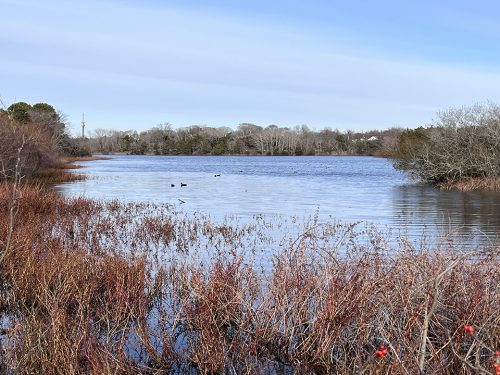
On Cape May Point, there’s a small 13-acre lake that’s a favorite stop of mine, and I’m far from the only one. Lake Lily has a storied past that makes for great reading. A third of a mile long and a tenth mile wide at its widest spot, the lake is ringed today by Lake Drive and a cluster of homes.
The indigenous Kechemeches, a Lenni Lenape tribe summered in Cape May and the lake’s freshwater was and remains a prized commodity on a peninsula surrounded by saltwater. This held true for visitors and marauders alike. And its location was also well-known to Europeans who came to our shores.
Lore has it that Scottish-privateer-turned-pirate Captain William Kidd sent tenders ashore here to fill barrels with freshwater. Kidd seized French ships in the Caribbean and legends contend that his crew buried treasures on the Cape May Peninsula. As best I can ascertain, when captured, Kidd would taunt his jailers with possessing the only knowledge of his hidden treasures, and he used this information to bribe officials and British royalty. Willard Bonner’s research on Kidd is written with some of the same mystery as the lost treasures themselves: “The wide dispersal of Kidd’s goods, actual or supposed, and the goods of Kidd’s men gave the authorities much trouble and kept active tongues alive.” My takeaway is that Kidd’s concealed loot is rumored to be in as many places as his voyages took him.
It has been documented in a letter by Colonel Robert Quarry that 16 sailors deserted Kidd’s ship in Cape May and Quarry dispatched them to a Burlington jail. Hearing of Kidd’s location, New Jersey Governor Jeremiah Basse sailed to the Point with plans to capture him. Kidd escaped, headed north, and was eventually arrested in Boston where he was sent to England and hung for piracy in 1701.
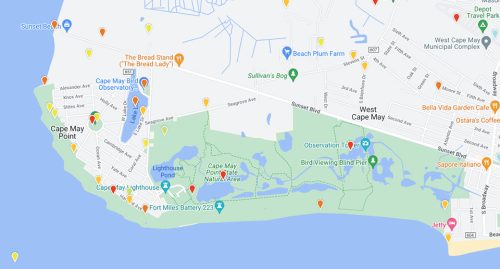
In her writing for CapeMay.com, Karen Fox relays that the Cape May State Park teaches children of Kidd’s visit and his purported treasures. There once was a large twisted cedar known as Kidd’s Tree in Cape May State Park, which is less than a half mile from Lake Lily.
Lake Lily is part of a series of ponds skirting the Point. The others are in the neighboring state park and on Nature Conservancy property. Lighthouse Pond and Bunker/ Shallow Pond are the largest, while others include Plover 1, Plover 2, Al’s Pond, Cattail Pond, and a few seemingly unnamed ponds. The adjacent property is Cape May Meadows, the Nature Conservancy’s most visited preserve in the region.
Returning to Lake Lily’s history, during the War of 1812 the British blocked the mouth of the Delaware Bay because of the importance of Philadelphia ports. British sailors would come ashore to raid farms and take provisions. Lake Lily was once again tapped for its freshwater supply. In 1813 a local militia took on the British, even digging a ditch from tidal Pond Creek more than a mile away in order to foul the water with salt, thereby making it non-potable. There are archeological remains of this ditch still evident.
As early as 1761 Cape May was considered America’s first seashore resort. The Jersey shore towns became religious revival and retreat areas in the late 1800s. In the 1870s the Presbyterians developed a retreat on the 260 wooded acres of Cape May Point. Considering the lake’s past it’s rather ironic that they hired noted British designer James C. Sidney to fashion what was to become known as Sea Grove, completed in 1875.
Pavilion Circle remains central to the development with its spokes of radiating streets and Lake Lily. The lake was dredged and stocked for recreational fishing. There was ice skating and an ice house, which was transformed into a social club by a Pittsburgh physician who placed a rustic bridge over the northern end of Lake Lily at the turn of the 20th century. This was a preferred photo spot.
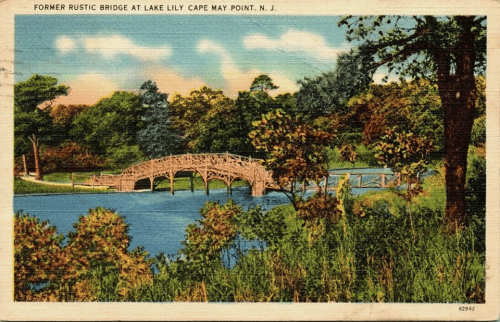
In more recent times (2003) the Lake has needed dredging and complex engineering to maintain its health. The Friends of Lake Lily and the Borough of Cape May Point led this effort. As recently as 2018 through 2020 the same players, plus New Jersey Audubon and the U.S. Fish and Wildlife Service, spearheaded a restoration effort. Much of this focused on the elimination of invasive plant species and the planting of beneficial native plants.
On President’s Day weekend a friend and I decided to hike the state park but first, as is tradition for us, we took inventory at Lake Lily. Today the freshwater is of great interest to migrating ducks and local birds. We saw a good variety of waterfowl—gadwall, buffleheads, mallards, hooded mergansers, American widgeon, ring-necked ducks, mute swans, Canada geese, great cormorants, and a pied-billed grebe.
Ebird is an application used by an internet community of birdwatchers to post its avian observations. It has created a database that helps document distribution, abundance, habitat use, and trends by people posting a daily checklist associated with a specific location. Since January 2024, more than 70 different species have been reported to ebird as being spotted at Lake Lily by birders.
Of special note are some of the high counts of an individual species. Brian Moscatello of Northwood Center fame reported 67 cedar waxwing on January 24, 2024, the single highest count for the location. Brian remarked there were likely 75 since they were spread among six trees. Vince Elia reported 117 ring-necked ducks on December 1, 2023. In January of 2023 Tom Baxter reported 241 gadwall and 164 American widgeon.
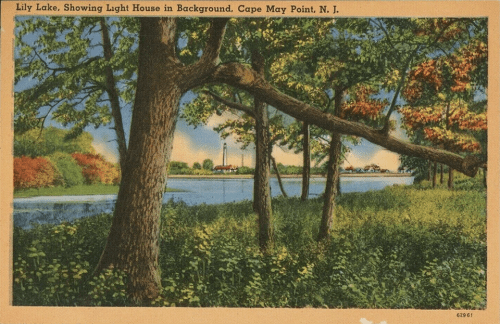
The freshwater lakes that border the dune abutting the Atlantic shoreline are one of the many reasons that Cape May is a top birding spot. The funneling of migration that we have spoken about in past articles and the habitat are all key to making this one of the country’s premier birding locations.
Many people go to Cape May Point State Park and its hawk watching platform and surrounding woods. But don’t forget this little jewel and its storied past. Quite possibly if you’re looking for Captain Kidd’s treasure you might find it is actually Lake Lily and the freshwater his crew sought.
Special thanks to: ”Lake Lily: Pirates, Spies and Swans,” by Karen Fox, March 1, 2012, CapeMay.com. Her story goes into greater detail and is well worth the read.
Bonner, Willard Hallam. “‘Clamors and False Stories’ the Reputation of Captain Kidd.” The New England Quarterly, vol. 17, no. 2, 1944, pp. 179–208. JSTOR, https://doi.org/10.2307/361873. Accessed 20 Feb. 2024.
Northwood Center
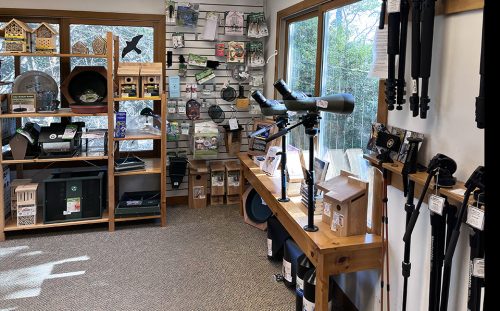 The New Jersey Audubon Northwood Center is located lakeside on E. Lake Drive. Be sure to visit the habitat behind the center where there’s a tiny trail and blinds for enjoying birds.
The New Jersey Audubon Northwood Center is located lakeside on E. Lake Drive. Be sure to visit the habitat behind the center where there’s a tiny trail and blinds for enjoying birds.
The Center is the home of the Cape May Bird Observatory. Staff members can provide you with a birding checklist and update you on local bird sightings. They have a large variety of things for sale—birdfeeders, new and used books, paintings, and a huge array of optics from all the major manufactures. Most importantly, you can test out the binoculars and spotting scopes and find an optic that meets your needs and your budget.









